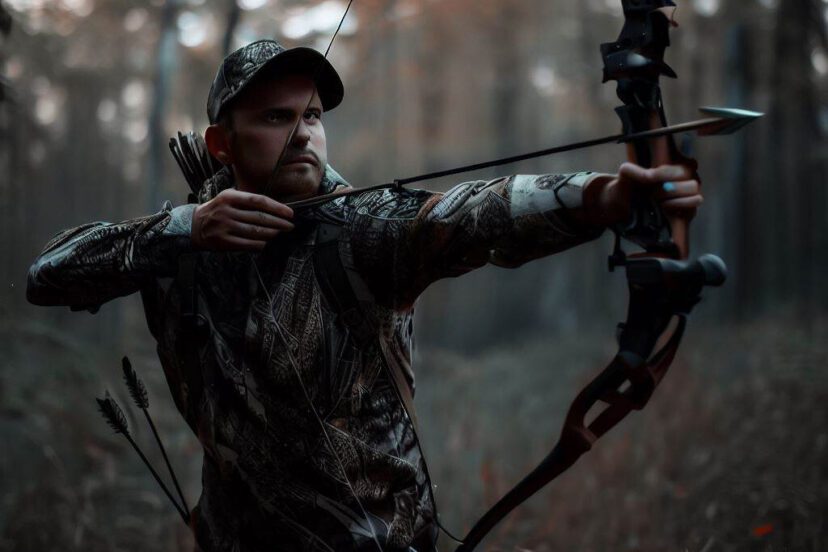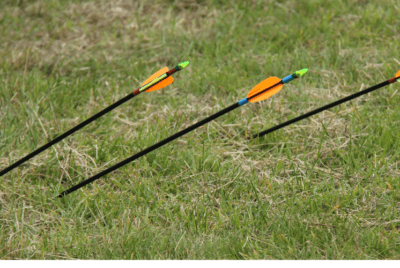Bow Hunting for Beginners: A Comprehensive Guide
Introduction
Welcome to the world of bow hunting for beginners, where the ancient practice of archery merges with the thrill of pursuing game. As an enthusiastic bow hunter, I understand the excitement and challenges that beginners face when venturing into this captivating niche. In this comprehensive guide, I will provide you with invaluable suggestions, expert tips, and step-by-step advice to help you embark on your bow hunting journey successfully. Whether you’re a complete novice or have some archery experience, this article will equip you with the knowledge and confidence to navigate the world of bow hunting. So grab your bow, let’s dive into the captivating world of bow hunting for beginners.
Understanding Bow Hunting
The Basics of Bow Hunting for beginners
Before delving into the world of bow hunting for beginners, it’s crucial to grasp the fundamentals. Bow hunting involves using a bow and arrow to hunt game animals. Unlike firearms, which offer greater distance and speed, bow hunting requires hunters to get up close and personal with their prey, relying on stealth, accuracy, and patience.
Equipment and Gear
To start your bow hunting journey, you’ll need the right equipment and gear. This includes a quality bow, arrows, broadheads, a release aid, a quiver, and proper clothing for camouflage and weather protection. Research and invest in equipment that suits your hunting style, body type, and budget.
Choosing the Right Bow
Selecting the right bow is crucial for your success as a bow hunter. Consider factors such as your physical strength, shooting style, and the game you plan to hunt. Compound bows are popular among beginners due to their adjustability and forgiving nature, while traditional recurve bows offer a more challenging and traditional experience.
Essential Accessories
In addition to the bow and arrows, several accessories can enhance your bow hunting experience. These include a rangefinder for accurate distance estimation, binoculars for spotting game, a tree stand or ground blind for concealment, and a backpack to carry your essentials. Invest in quality accessories that align with your hunting goals.
Developing Proper Technique
Learning Archery Fundamentals
To become proficient in bow hunting, it’s essential to develop solid archery skills. Take the time to learn proper shooting form, including your stance, grip, anchor points, and release technique. Enroll in archery classes or seek guidance from experienced archers to refine your technique and ensure consistency in your shots. Regular practice is key to improving your accuracy and building muscle memory.
Practicing Form and Accuracy
Consistency and accuracy are paramount in bow hunting. Dedicate time to practice your shooting technique regularly. Set up targets at varying distances and practice shooting from different positions, simulating real hunting scenarios. Focus on proper form, aiming, and executing smooth releases. As you progress, challenge yourself by shooting from elevated positions or in different weather conditions to enhance your adaptability.
Mastering Stealth and Camouflage
Bow hunting requires blending into the natural environment and remaining undetected by game animals. Master the art of stealth and camouflage by choosing clothing that matches your hunting surroundings, utilizing scent control methods, and learning how to move silently and slowly. Practice patience and observe your surroundings to avoid startling or alerting the animals you’re targeting.

Navigating Hunting Regulations and Ethics
Researching Local Laws and Seasons
Before heading into the field, familiarize yourself with the hunting regulations and seasons in your area. Contact your local wildlife agency or visit their website to obtain the necessary licenses and permits. Understand the bag limits, hunting zones, and any restrictions imposed to ensure you comply with the law and contribute to conservation efforts.
Understanding Safety and Ethics
Hunting responsibly and ethically is essential for the preservation of wildlife and the reputation of bow hunters. Educate yourself on safe hunting practices, including proper handling of weapons, identifying your target and beyond, and respecting private property. Follow fair chase principles and take only ethical shots within your effective range to ensure a clean and humane kill.
Scouting and Preparing for the Hunt
Identifying Game Trails and Signs
Scouting is a critical aspect of successful bow hunting. Spend time in your hunting area to locate game trails, bedding areas, food sources, and waterholes. Look for signs such as tracks, droppings, rubs, and scrapes that indicate recent animal activity. Understanding the behavior and patterns of your target species will increase your chances of a successful hunt.
Setting Up Trail Cameras
Trail cameras are valuable tools for monitoring wildlife activity and gathering information about the game in your hunting area. Place them strategically along game trails or near feeders to capture images and videos of the animals that frequent the area. Review the footage to identify patterns, determine the best hunting times, and learn about the size and age of the game.

Preparing Hunting Locations
Once you’ve identified prime hunting locations, it’s time to prepare them for your hunt. Clear shooting lanes, remove any obstacles that may obstruct your arrow’s path, and set up natural or artificial blinds for concealment. Create mock scrapes or use attractants to lure game into your desired area. Remember to respect the environment and leave no trace behind.
Tracking and Taking Down Your Target
Understanding Shot Placement
Making an ethical and effective shot is crucial for a successful hunt. Learn about the anatomy of the game animals you plan to hunt and understand the vital organs for a quick and humane kill. Practice shooting at life-sized targets that replicate the animal’s anatomy to improve your accuracy and shot placement. Aim for the vitals to ensure a clean and ethical harvest. Check out our guide on where to shoot a turkey with a bow and learn the best shot placement to kill a turkey humanly and effectively.
Following Blood Trails
After making a shot, it’s essential to track the wounded animal to recover it. Learn how to interpret blood trails by observing the color, consistency, and quantity of blood. Take your time and follow the trail carefully, marking the spots where blood is found. Utilize tracking dogs if available or seek assistance from experienced hunters to increase your chances of finding the wounded game.
Recovering Harvested Game
Once you’ve located your harvested animal, it’s time to field dress it properly. Ensure you have the necessary tools, such as a sharp knife and gloves, to perform the field dressing process. Take your time and follow the necessary steps to remove the internal organs and prepare the animal for transportation. Proper field dressing not only ensures the quality of the meat but also contributes to wildlife management and disease prevention.
Tips for a Successful Bow Hunt
Patience and Persistence
Bow hunting requires patience and persistence. It may take several hunts before you have an opportunity to harvest game. Stay focused, remain positive, and be prepared to invest time and effort into your pursuit. Remember, the thrill of the hunt lies in the journey as much as the end result.
Mastering Fieldcraft
Developing fieldcraft skills will greatly enhance your bow hunting success. Learn to read animal behavior, understand wind patterns, and practice remaining undetected. Hone your stalking abilities, adapt to changing conditions, and be adaptable in your hunting strategies. The more you understand the natural world, the better you can anticipate and capitalize on opportunities.
Learning from Experience
Bow hunting is a continuous learning process. Embrace every hunt as an opportunity to improve your skills and gain valuable experience. Reflect on your successes and failures, adjust your tactics accordingly, and apply the lessons learned to future hunts. Engage with fellow hunters, join hunting forums, and participate in workshops to expand your knowledge and stay up-to-date with the latest techniques and gear.
Conclusion
Embarking on a bow hunting journey as a beginner can be both exciting and challenging. By understanding the basics of bow hunting, developing proper technique, navigating hunting regulations and ethics, scouting and preparing for the hunt, and mastering the art of tracking and taking down your target, you’ll be well on your way to becoming a successful bow hunter. Remember to approach hunting with respect for nature, wildlife, and fellow hunters. May your bow hunting adventures be filled with thrilling encounters, personal growth, and a deep appreciation for the natural world.
FAQs
Q: How long does it take to become proficient in bow hunting?
A: Becoming proficient in bow hunting for beginners varies for each individual. It takes time and consistent practice to develop the necessary skills and knowledge. Expect to dedicate several months to years of practice to become proficient.
Q: Are there any specific laws or regulations I should be aware of before bow hunting?
A: Yes, hunting laws and regulations differ between regions. It’s essential to research and understand the local laws, obtain the necessary licenses and permits, and abide by bag limits and hunting seasons.
Q: Can bow hunting be physically demanding?
A: Bow hunting requires a certain level of physical fitness. Drawing a bow, hiking in rugged terrain, and tracking game can be physically demanding. Engaging in regular exercise and strengthening exercises specific to archery can help improve your endurance and performance.
Q: What should I do if I wound an animal but cannot find it?
A: If you make a shot and cannot find the wounded animal, give it ample time before attempting to track. Consult experienced hunters or consider hiring a professional tracker or using trained tracking dogs to increase the chances of locating the wounded game.
Q: How can I ensure an ethical and humane kill as a bow hunter?
A: Practice shooting accuracy, understand shot placement for the game you’re targeting, and limit your shots to within your effective range. Continuously work on improving your skills and aim for clean and quick kills to ensure the most humane harvest possible.
With these essential tips and guidance, you are now equipped with the knowledge and advice needed to embark on your bow hunting journey as a beginner. Remember, bow hunting is a skill that develops over time, so be patient, persistent, and always prioritize safety and ethical practices. Enjoy the adventure, embrace the challenges, and let the thrill of the hunt connect you with nature in a profound and meaningful way. Happy hunting!






